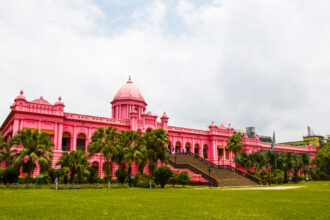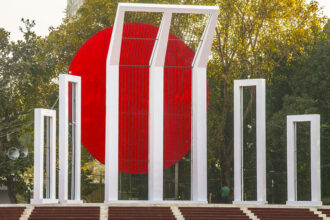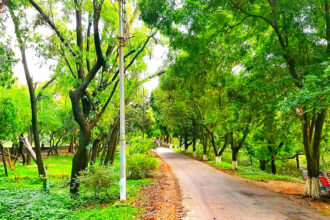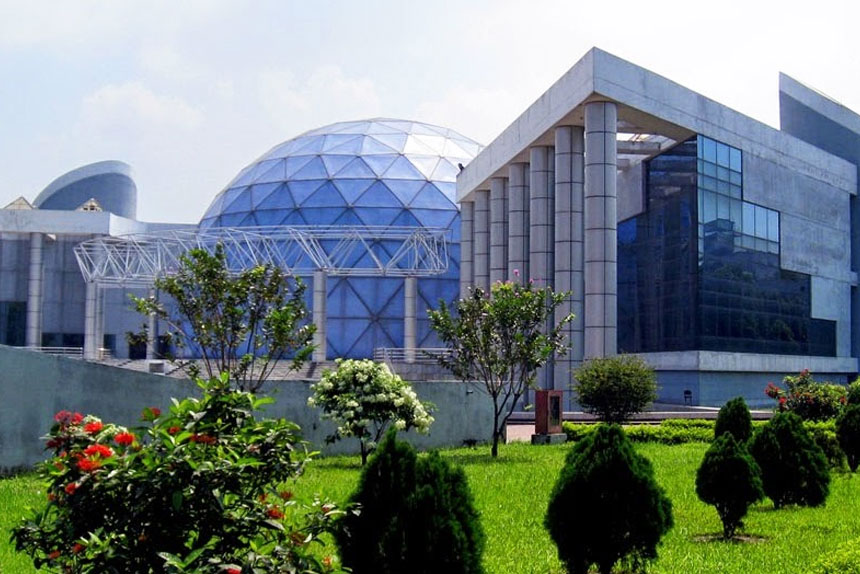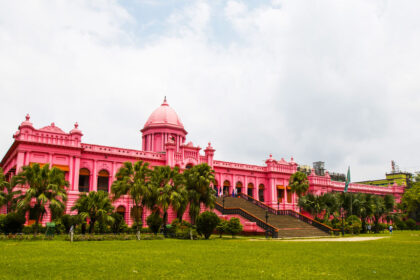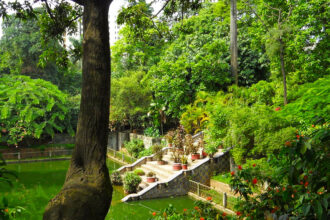The Bangabandhu Sheikh Mujibur Rahman Novo Theatre, previously known as Bhashani Novo Theatre, is located in Dhaka, Bangladesh. This planetarium and science museum was designed by architect Ali Imam and was exposed by the Ministry of Science and Information and Communication Technology of the Bangladesh Government. The theatre was established to promote non-formal science education and eradicate superstitions and blind faith from society, with the aim of instilling a positive scientific temperament in the minds of people, especially students.
The museum offers a wide range of interactive exhibits and displays that cover various scientific concepts, including physics, chemistry, biology, and astronomy. Additionally, the planetarium is one of the largest in the world and features a 23-meter diameter dome that projects a 3D view of the night sky, providing visitors with an opportunity to explore the wonders of the universe.
Guided tours and educational programs are also available at the museum, catering to visitors of all ages and backgrounds. The aim is to provide an engaging learning experience that inspires and excites people about science, technology, and astronomy.
Overall, the Bangabandhu Sheikh Mujibur Rahman Novo Theatre is an important and valuable institution that plays a significant role in promoting science education and scientific thinking in Bangladesh.
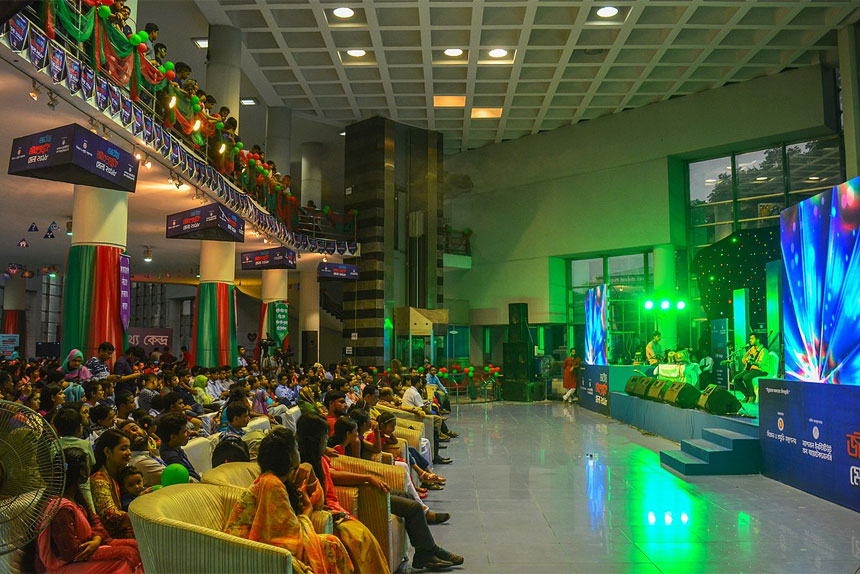
- History and Significance: The content describes the history and establishment of the Bangabandhu Sheikh Mujibur Rahman Novo Theatre, formerly known as the Bhashani Novo Theatre, which opened to the public on 25 September 2004. It was commissioned by the Ministry of Science and Communication Technology of the Government of Bangladesh and was later made autonomous by the Bangabandhu Sheikh Mujibur Rahman Novo Theatre Bill 2010.
- Exhibits: The museum offers a variety of interactive exhibits that cover various scientific concepts, including physics, chemistry, biology, and astronomy. These exhibits allow visitors to learn about the latest advances in science and technology in a fun and engaging way.
- Guided Tours: Guided tours are available at the museum, providing visitors with an opportunity to learn about the exhibits and displays in detail. The tours are designed to cater to visitors of all ages and backgrounds and cover a wide range of scientific topics.
- Photography Rules: Photography is not allowed in the museum or planetarium. Visitors are advised to leave their cameras and other recording devices outside the premises.
- Nearby Attractions and Places to Eat: There are several nearby attractions that visitors can explore, including the National Museum of Bangladesh, the Dhandmondi lake, and the Bangla gallery of fine arts. In terms of dining options, there are several restaurants and food stalls near the museum that serve local cuisine and international dishes.
- Recommended Sightseeing Time: The recommended time to explore the museum and planetarium is around 2-3 hours, allowing visitors to fully immerse themselves in the exhibits and displays.
- Transportation: The museum is located at Bijoy Sharani Avenue of the Tejgaon area in Dhaka, Bangladesh. Visitors can take a taxi, bus, or rickshaw to reach the museum. It is also accessible by the metro rail, with the nearest station being the Bangabandhu Sheikh Mujib Medical University Station.


